Flower Power in the Outdoor Classroom
“Look, look! Come and see what is inside this flower!” It’s a warm, late-spring day and our friends are scattered around the yard, discovering the new surprises that have popped up overnight. The flowers are finally showing their beautiful blooms!
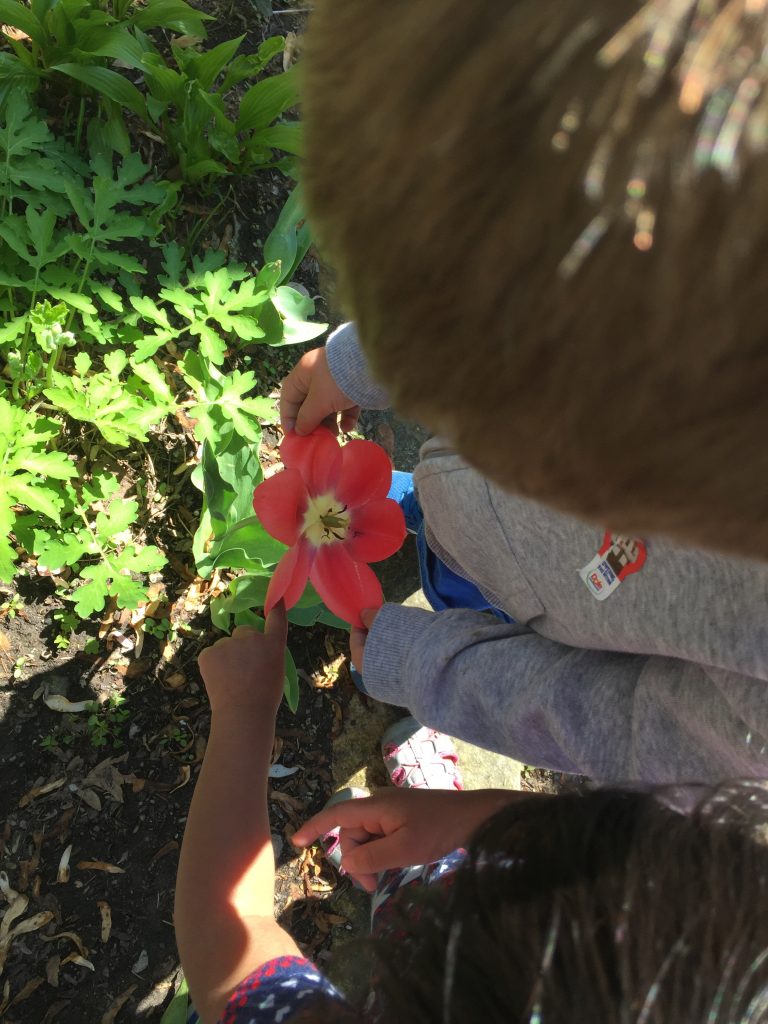
“Is it a bumblebee?” I ask. They look at me—their eyes big with wonder. It’s been many months since we’ve had flowers, and their young brains may not have retained that bit of information. “Sometimes the bees go inside of the flowers to get nectar and pollen. Nectar is like a little energy drink for the bees.”
“Nooooo! It’s black!” says Jamison. His friends gather around to take a closer look at the flower. We have just formed our curriculum for the day—or at least for the moment. We have science as we explore and gain a better understanding of the world around us. We have math as we count and discuss attributes and take parts and join them into a whole. We have language as we learn new vocabulary words. We have art at our fingertips as we explore the beauty of this flower in all of its blossoming glory.
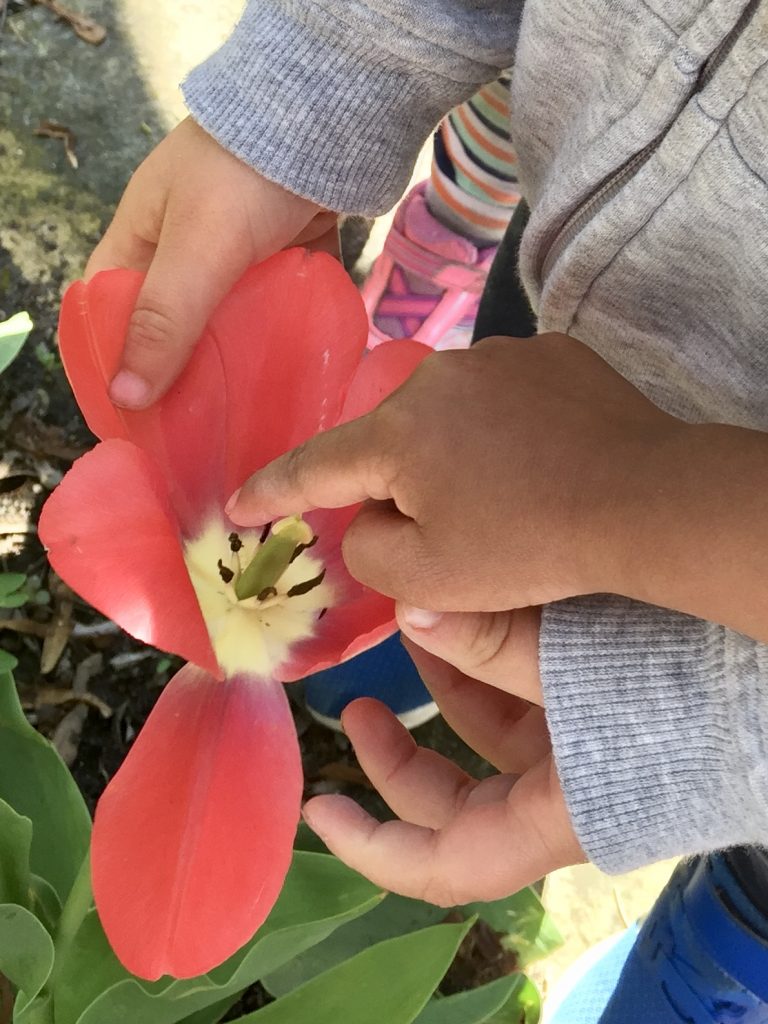
I tell the children that the black pieces are called anthers and the tall green piece at the center of the flower is the stigma. “This is where the pollen and nectar are kept,” I say, “and why the bees like to buzz around inside of our flowers.”
“Can we drink the energy juice?” asks Eve, much to the delight of her giggling friends. Eve smiles, but I know that her brain is really trying to work this out.
“I think we should leave it for the bees,” I suggest.
“The bees will make honey from the nectar,” four-year-old Noah explains. “We can eat the honey but we can’t eat the nectar!”
I see Noah’s friends nodding, as this makes complete sense to them.
“Let’s have honey with our snack this afternoon,” I suggest to the delight of our class.
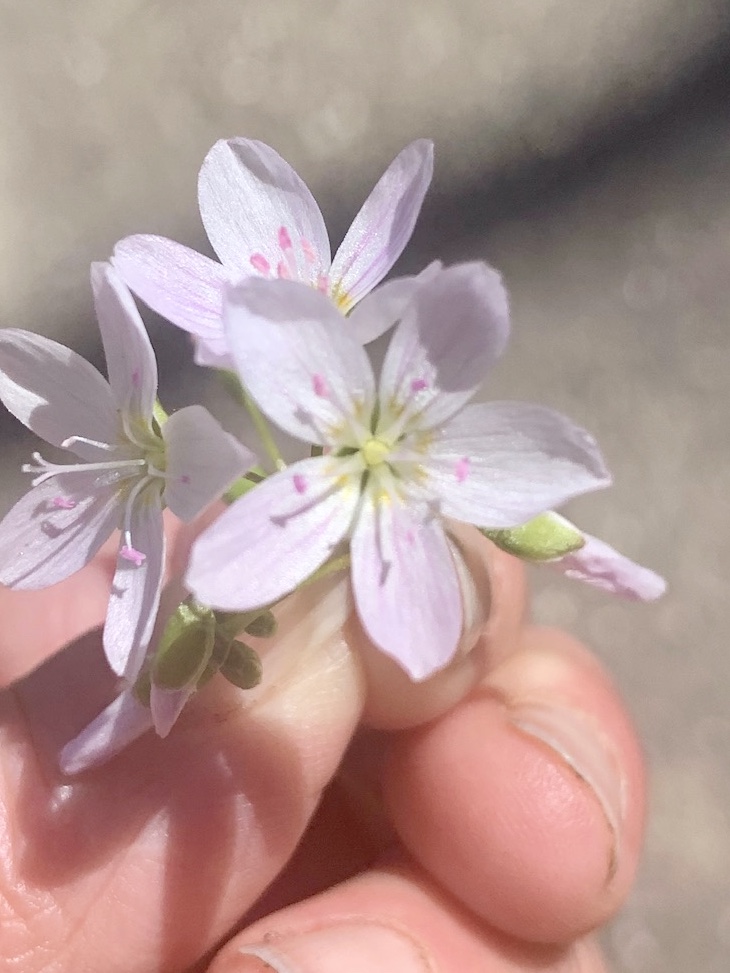
“This flower has five petals!” I turn around to see our subitizing queen, Annika, at it again. Subitizing is the ability to “see” a small number of objects and know how many are there without counting. When we roll dice, we don’t need to count the pips, we know the number when we see it. Some children grasp this concept easily, while others need to work with it a bit more.
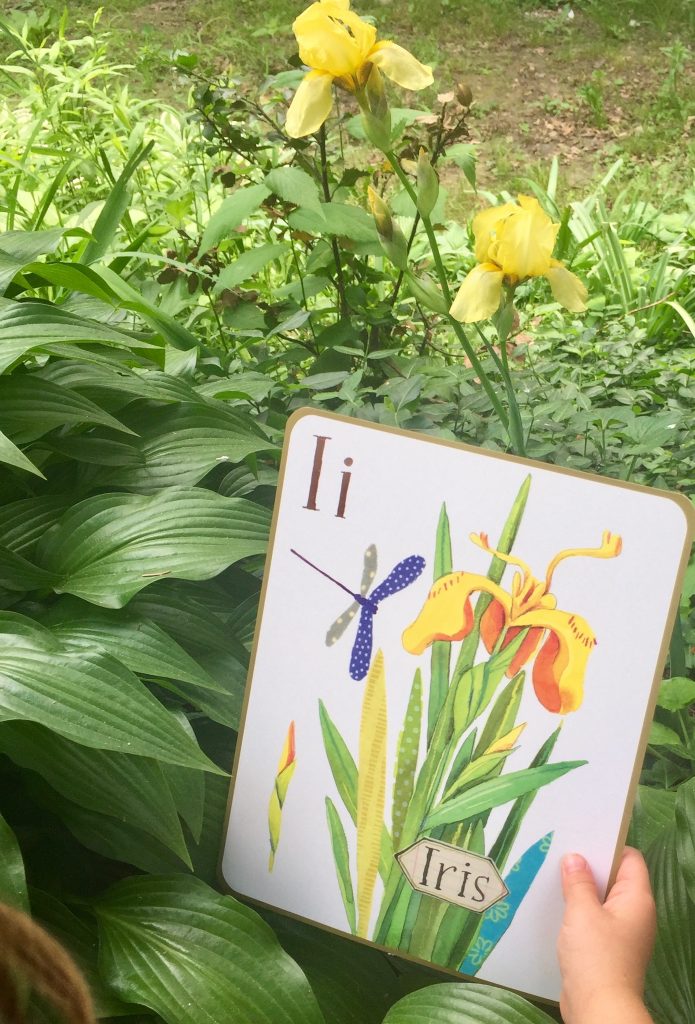
We continue to count the petals, find the stem and leaves and find the anthers again. Individual flower parts are not exciting on their own but, when these pieces are put together, they make something more complex and more beautiful. The learning flows from the lips of the young friends as they share insights and ideas and think out loud as they process all that they are absorbing.
We find the dandelions on the hill and we are again measuring, building our vocabularies and investigating with the field of gold. “Look at how long THIS stem is!” shouts Violet.
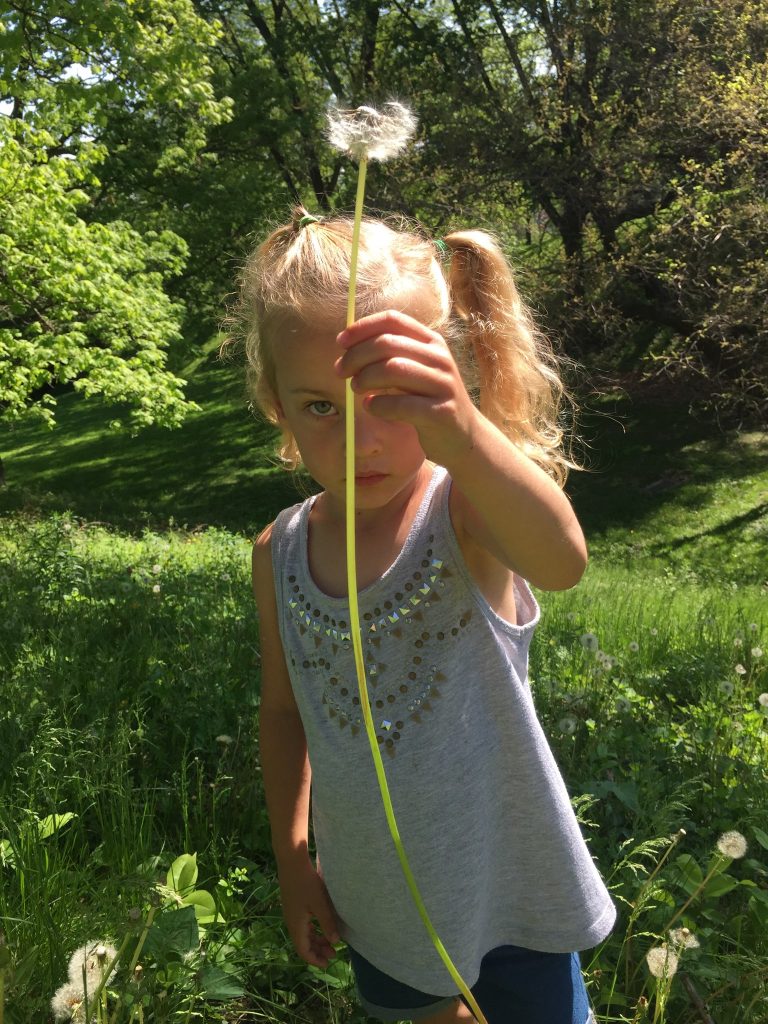
I look over to see Claire in a world of her own. Quietly splitting the stem into pieces. Ah, decomposing. Math. Deep exploration to develop an understanding that will make sense in a classroom years down the road.
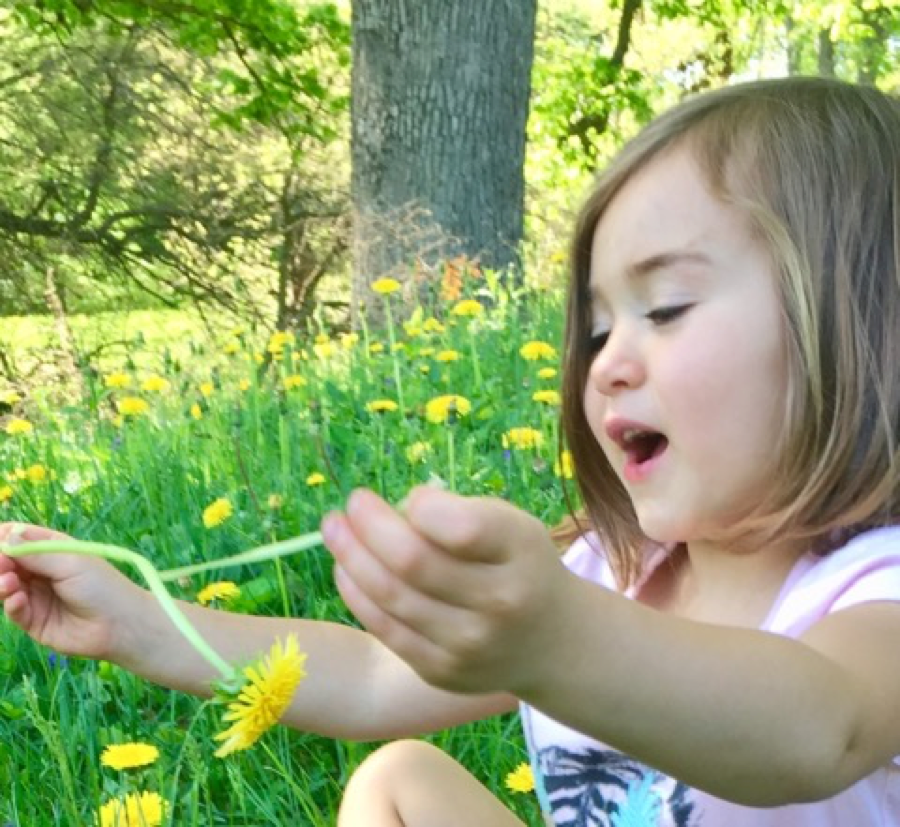
This is the learning that makes me smile. This is what learning can look like if we give children time to explore and move and play and figure it out in nature. This is the good stuff that sticks in the brain, like nectar to a flower. The foundations of math, science, exploration and investigation. Give your children the gift of nature and let the learning flow on their terms. The math and science and language are all just outside of your door. Enjoy!
I like how they are using matching cards that are similar to the real object and labeling the card for literacy as well. Children are learning so much in a natural math environment by just observing all the different plants and wildlife around them. Great for at home learning for families.
I work with 6wks to 6months sometimes I am needed in the 1 yrs room i would love to do this activities so you have any suggestions on how to make it infant friendly.
I like to use the clear blocks that you can put loose parts in (plexiglass with wooden sides). This adds color to the block area and allows the child to view nature with no worries of putting pieces in their mouths.
I loved this lesson and great math lesson for young children
Lots of potential for math language to develop and flow with little ones in this activity.
This is a great example of how to utilize nature in your math lessons. I love it!